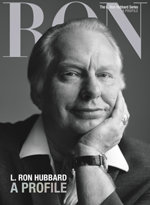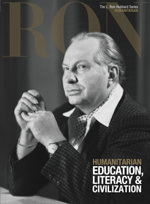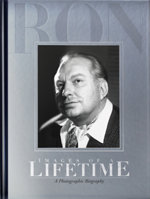Photographer

Photography, as L. Ron Hubbard was fond of pointing out, means “Light writing,” and given the way in which his photographs communicate, the phrase is entirely apt.
A keen student of the camera through his youth, his career effectively began in the late 1920s with a series of celebrated studies taken through the course of travels in Asia and the South Pacific. The work was squarely professional and ultimately purchased by National Geographic. Returning to the United States, he continued on a firmly professional track as both a photojournalist for local newspapers and, on a freelance basis, for a variety of national publications. Most notable among the latter was his work for the air-enthusiast publication The Sportsman Pilot.
With the commencement of his formal writing career in 1933, Mr. Hubbard’s photographic work tended to take a back seat. Nevertheless, his later years still regularly found him behind the camera for work that included promotional photographs for various European bodies and much acclaimed landscapes of southern England (the latter eventually selected from among 3,300 entries for the International Photography Exhibition in Nantes). Mr. Hubbard’s photographs from these years were also selected for display at the Versailles Salon International d’Art Photographique and subsequently saw publication in the L. Ron Hubbard photographic calendars.
In 1975, he continued such work on the island of Curaçao in the Netherlands Antilles, where in a matter of a few days of his arrival it was reported: “Mr. Hubbard with his professional acuteness gets the shots he wants, one after another at a production rate of more than 7,000 photographs since he first started taking photographs here in Curaçao.”

Returning to the United States in 1976 to establish a home in Southern California, L. Ron Hubbard’s photographic career took another turn entirely: training students of photography. From this instructional work came his delineation of all vital steps the photographer must take to ensure a successful shot—including the often-neglected preliminary of envisioning or preconceiving the picture. Or as an alternative, he advised photographers learn to immediately recognize a picture. In either case—and herein lay the common denominator of all L. Ron Hubbard’s artistic work—photographers must learn to “make the picture talk.” As a part of the instruction process, all students were privileged with a personal L. Ron Hubbard review of their photographs. In addition to the more conventional points of composition and lighting, he typically continued to stress that very key matter of communication: What, if anything, did the picture say? Also from this instructional period came his benchmark testing procedures for both equipment and film, and his clarification of that long-misunderstood subject, composition.
Today, the definitive body of his photographic work has been carefully assembled in the L. Ron Hubbard Series edition, Photographer: Writing with Light and Images of a Lifetime: A Photographic Biography. In all, more than 600 photographs are presented, from his earliest shots with a simple Kodak Brownie to his later work in Southern California. Included, of course, are several selections from his famed China series, his award-winning shots of the English countryside and all else that defined the man’s work as “writing with light.”

The L. Ron Hubbard Camera Room housing a collection of photographic equipment assembled from some sixty years of “writing with light”




